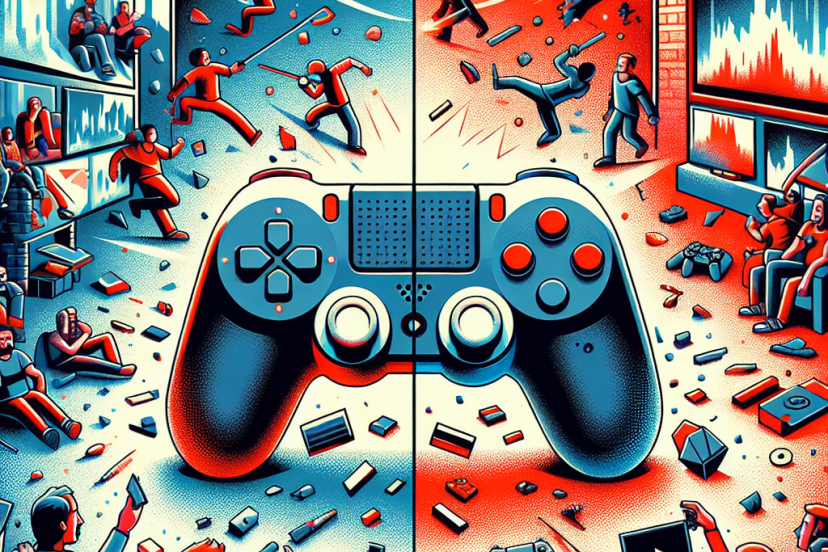How to Choose the Perfect Location for Your VR Gaming Room
Understanding Space Requirements
When choosing a location for your Virtual Reality (VR) gaming room, the first consideration is the available space. VR gaming requires a sizeable physical area for movement, ranging from a minimum of 6.5 feet by 5 feet for the best experience. Measure your intended space accurately to ensure you can accommodate the necessary equipment and provide room for mobility.
Room Size
Larger rooms are preferable as they give you more freedom to move around. Consider rooms that are at least 12 feet by 10 feet. High ceilings are also advantageous, allowing for a more expansive feel. If you plan to add additional equipment or furniture, factor that into your overall space calculation. Adequate wall distance is necessary for setups that use external tracking systems like the HTC Vive or Valve Index.
Flooring Type
The type of flooring can significantly affect your VR gaming experience. Carpeted rooms can be comfortable but may hinder mobility if the fibers are too thick. Hardwood or laminate floors are excellent options as they offer a smooth surface that allows for easy movement without the risk of tripping. Moreover, consider adding non-slip mats or rugs in areas where equipment may be set up for additional stability.
Lighting Conditions
Lighting plays a crucial role in the VR experience. Adequate ambient lighting prevents motion sickness and enhances graphics clarity, but direct sunlight can cause reflections and glare on VR headsets, affecting performance. Opt for a room with adjustable lighting. Dimmable LED lights or smart bulbs that can be controlled remotely are ideal, allowing you to change the light intensity based on your gaming needs.
Electrical Outlets
Ensure your chosen room has multiple electrical sockets to accommodate various devices, including your VR headset, gaming PC or console, and accessories. Ideally, sockets should be situated close to the player’s standing area to avoid tripping over cords. If you lack sufficient outlets, consider having an electrician install additional power points or use surge protectors with gang sockets.
Ventilation and Temperature Control
VR gaming can be physically intensive, leading to increased body temperature and sweating. It’s essential to choose a well-ventilated room or one that allows for temperature control, such as air conditioning or portable fans. Keeping the room cool will enhance your gaming comfort and prolong your gaming sessions.
Furniture and Layout
Think about the furniture and layout of your VR gaming room. A minimalist approach works best, allowing you to move freely without obstructions. If you need furniture, opt for items that can be easily moved or stored, such as foldable chairs or tables. Create a layout that maximizes space while providing a safe area for gameplay, making sure there’s a designated area for equipment such as VR backpacks or gaming consoles.
Proximity to Other Spaces
Consider the room’s proximity to other spaces within your home, particularly if you live with others. A private room is ideal to minimize distractions during gameplay. If that’s not possible, make sure it’s away from high-traffic areas to avoid interruptions. Soundproofing can be beneficial, especially if you plan to immerse yourself fully in the gaming experience.
Cable Management
With the number of devices connected in a VR gaming setup, cable management is crucial to maintain a tidy and safe environment. Look for rooms where you can easily run cables along walls or ceilings to keep them out of the way. Wireless technology is also increasingly viable in the VR space; consider investing in wireless setups or devices to reduce cable clutter.
System Requirements
Before deciding on a room, confirm that it can house your gaming system’s requirements. High-end VR experiences typically demand significant computing power. Ensure that the room can accommodate a gaming PC or console that meets or exceeds recommended specifications for VR gaming. Verify that the layout allows sufficient space for your system’s cooling requirements to prevent overheating during gameplay sessions.
Tech Accessibility
Convenient access to technology can enhance your VR experience. Ensure that the gaming room has sufficient Wi-Fi bandwidth to maintain the smooth running of your virtual activities. Consider your internet router placement; proximity will help prevent latency spikes during intense gaming sessions. Additionally, having a dedicated area for your peripherals—like VR controllers and chargers—will keep your setup organized.
Personalization and Ambiance
Your gaming room should reflect your personality and create an immersive atmosphere. Consider wallpaper, paint colors, or themed decorations that enhance the gaming experience. LED strips or smart lighting could allow you to change colors based on your game for a more engaging environment. Ultimately, personalize the space to make it a welcome retreat for your gaming adventures.
Safety Considerations
Safety is paramount when designing a VR gaming room. Ensure that the space is free from potential hazards such as loose cables, fragile items, or sharp objects. Consider installing corner pads or bumpers if your VR experiences lead to collisions with walls or furniture. Ensure that the area is well-lit to prevent any accidents during play.
Sound and Isolation
The sound quality can greatly influence your VR gaming experience. Choose a room with sound insulation to prevent echo and enhance immersion. Consider investing in soundproofing materials if sound leakage or external noise is a concern. High-quality headsets with excellent audio experience can also elevate your gameplay.
Privacy and Security
If you live with others, consider the level of privacy you desire in your gaming space. Opt for a location that can be closed off to minimize distractions, allowing you to fully engage in your virtual escapades. Additionally, ensure that your equipment is secure to deter theft or damage.
Future Expansion
As VR technology progresses, you might want to expand your setup or acquire new equipment. Choose a location that offers flexibility for future enhancements. Consider storage areas for extra accessories, headsets, or gaming gear. A room that allows for simple reconfiguration will accommodate any upgrades or additions.
Community and Social Aspect
While VR gaming can be a solitary experience, many enthusiasts enjoy sharing it with friends. If you plan to host gaming sessions, consider a location that accommodates multiple players comfortably. Ensure there is enough space for additional VR setups or seating for spectators.
Conclusion
In summary, the location of your VR gaming room significantly impacts your gaming experience. Prioritize adequate space, ventilation, electrical accessibility, and safety to create an optimal setup. Personalization and sound considerations will enhance immersive gameplay, ensuring your VR gaming experience is both enjoyable and exhilarating.




